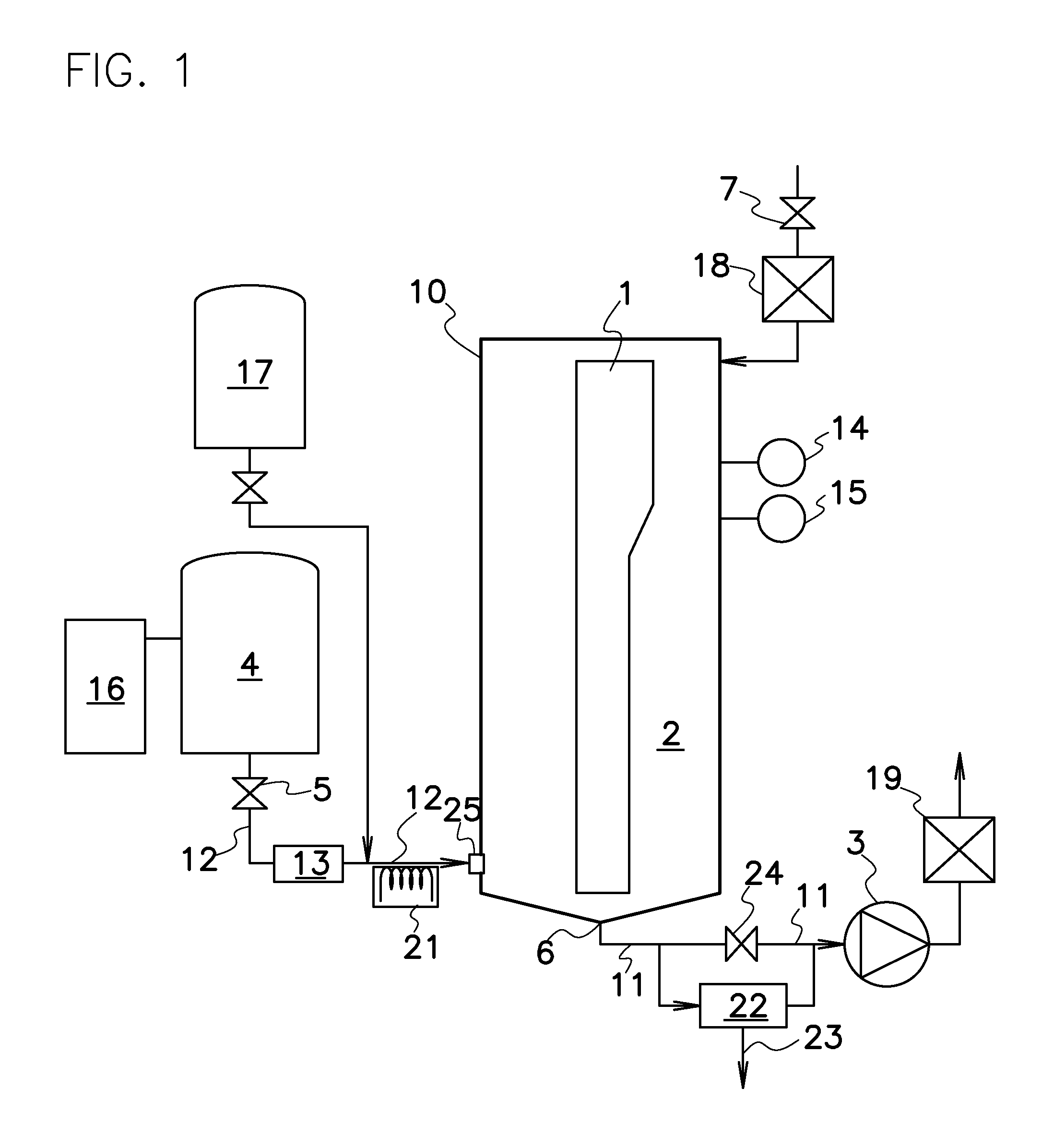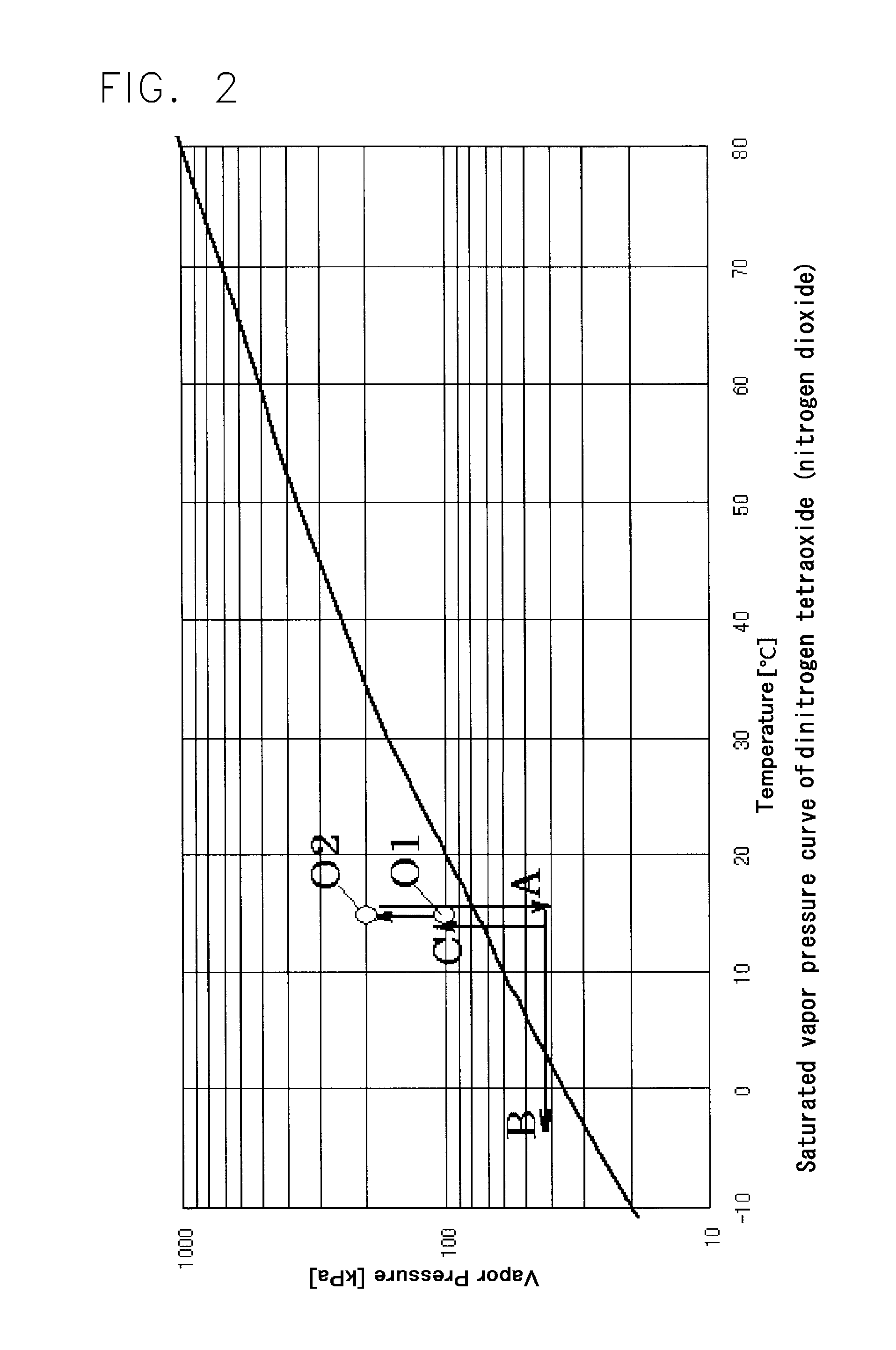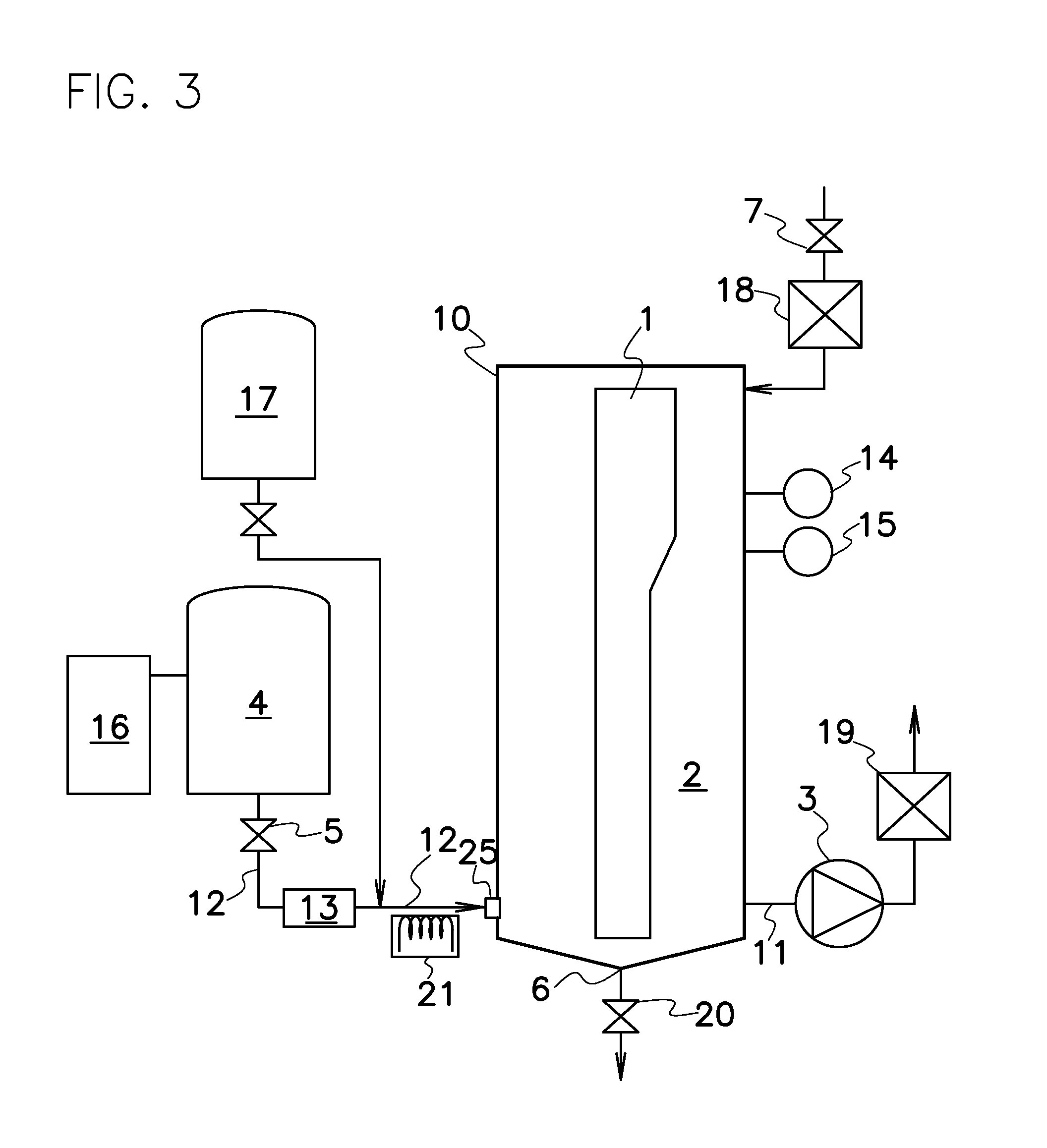One such sterilizing process with
autoclave, however, is defective because it disadvantageously requires heating an inside of
autoclave vessel up to a temperature of 130 degrees C. that is not applicable to sterilization of low heat-resistant instruments for example made of rubber.
This process also raises a further problem with sterilization of plastic instruments because they are subject to heating cycles that cause plastic instruments to repetitively, physically and thermally expand and contract.
However, it must utilize highly reactive
ethylene oxide gas that disadvantageously brings dangers for people because of its ignitability and explodability under pressure.
However, these reactions are disadvantageous because they require proper and strict controls of the
reaction conditions in
reaction chamber when mixing a plurality of materials within
reaction chamber to turn them into nitrogen oxide gas to be sent to a sterilization chamber, and failure of proper controls for the reactive conditions would lead to unstable concentration in generated nitrogen oxide that would result in insufficient disinfection of an object in sterilization chamber.
In another aspect, with excessive amount of nitrogen oxide fed into sterilization chamber, that would cause unfavorable adherence of nitrogen oxide on sterilized
medical instruments at a
high concentration against their subsequent safe usage.
Also, in fact, actual medical practices would find difficulty in applying sterilization to medical instruments if each sterilization requires mixing of
solid feedstock and acid.
In addition, acids are dangerous when handling for transportation and storage.
Patent Document 2 discloses a sterilization apparatus for generating nitrogen oxide gas through
plasma gasification that utilizes nitrogen and
oxygen in the air as raw materials, however, it has a very low efficiency in generation of nitrogen oxide gas although not involving any risk in conveying and storing the raw materials.
For that reason, the sterilization apparatus of
Patent Document 2 is defective because it must spend so much time and
high energy cost not only in preparation for generating and filling nitrogen oxide gas inside of sterilization chamber prior to the start of sterilization but also in completed sterilization of the object while keeping a predetermined concentration of nitrogen oxide within sterilization chamber.
In addition, the apparatus in
Patent Document 2 must generate nitrogen oxide in a
plasma gasifier and further undesirably convert it into highly sterilizing
nitrogen dioxide by means of expensive catalyst such as
platinum or
palladium that may raise the production cost.
Moreover, previous studies and researches including Patent Documents 1 and 2 have never proposed any
recovery method for efficiently and completely collecting a sterilant from a sterilization chamber after sterilization.
Therefore, prior art sterilizations are dangerous because they cannot completely remove poisonous sterilant at a
specific density range particularly around specific configurations of medical instruments to be safely reused or recycled after sterilization.
However, in fact, such filtering microparticles alone fails to fully eliminate
bacteria because it cannot completely remove bacteria in the stagnant air around corners of clean rooms.
Taking in air and blowing air through filters cannot fully remove contaminants such as microorganisms adhering or attaching onto wall and floor surfaces in clean room.
Thus, such air filtering methods require periodical sterilization of inside in clean rooms.
Sterilization of medical instruments typically utilizes autoclaves (or high-pressure
steam sterilizers), however, they are defective because they disadvantageously require heating inside of an autoclave vessel up to a temperature of 130 degrees C., and so autoclaves cannot be applied to low heat-resistant instruments for example made of rubber because they must use pressurized
water vapor that penetrates into interstices inherently formed on plastics under the pressure of approximately 2 atmospheres while facilitating deterioration of plastics.
Thus, it would be too dangerous for
human health to inhale remaining
ethylene oxide gas after sterilization.
Also, the isolator
system in Patent Document 3 fails to precisely control a supply amount of
hydrogen peroxide, and the excessive supply amount may lead to a
corrosion to metallic components in isolator and a residue of
hydrogen peroxide after sterilization, and the insufficient supply amount may fail to completely destroy microorganisms and bacteria in isolator.
This
ozone sterilizer is disadvantageous because it generates
ozone from air source with its too low efficiency and takes a long time to replete
ozone of a predetermined concentration in the sterile area of large volume, and it fails to precisely control the generated amount of ozone for exact adjustment of
ozone concentration in the sterile area.
The ozone sterilizer requires an
ozone generator that generates ozone at the site of sterilization immediately before its usage because ozone is so chemically-unstable as to inherently and gradually proceed with the
decomposition at a
room temperature.
For that reason, the ozone sterilizer must be made into a larger size of the whole sterilizing
system that increases equipment installation and running costs inclusive of operating
electricity costs.
Also, ozone is too dangerous because of its strong oxidizability to deadly poison at
high concentration, and human
inhalation of ozone causes his or her viscera to be oxidized to
erosion.
When nitrogen oxide is used as a sterilant in Patent Document 1, it must mix different kinds of materials within a
reaction chamber to generate and supply a nitrogen oxide gas into spatial area while it is impossible to detect and control a precise yield of nitrogen oxide gas and also to be unable to feed nitrogen oxide gas at a predetermined precise concentration into the spatial area against full sterilization of medical devices therein.
Adversely, excessive amount of nitrogen oxide into the chamber, would cause nitrogen oxide at the elevated concentration to unfavorably remain around and adhere on the sterilized objects to
commit a safety violation.
Also, if every sterilization requires the mixing procedure of
solid sterile feedstock and acid, in fact it would be very difficult to be adopted in
medical practice for sterilization of clean rooms and medical instruments.
In addition, acids involve much danger in its usage and handling for transportation and storage.[Patent Document 1] Japanese Patent Disclosure No. 2009-542333[Patent Document 2] Japanese Patent Disclosure No. 2011-4802[Patent Document 3] Japanese Patent Disclosure No. 2006-68122[Patent Document 4] Japanese Patent Disclosure No. 2001-340432
 Login to View More
Login to View More 


